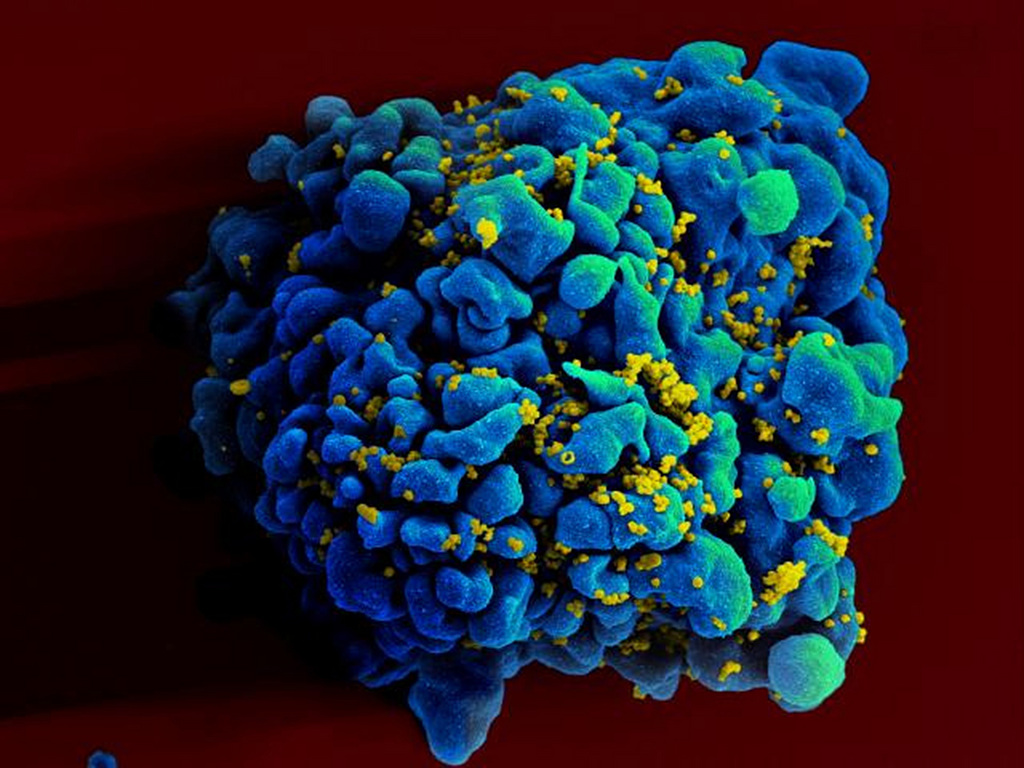Scientists make progress in typhoid fever battle

Researchers from the University of Basel have uncovered how the typhoid fever pathogen repeatedly manages to evade the body’s immune system – a discovery that could help to provide new strategies in the treatment of the life-threatening disease.
The findings, by the research group led by Dirk Bumann at the university’s Biozentrum, its centre for molecular life sciences, are published in the scientific journal Cell Host & Microbe.
Bumann told swissinfo.ch that the team’s work was a “further step” in understanding how the infection works.
Typhoid fever usually occurs in countries with poor hygiene and infects around 20 million people around the world. In Switzerland, the Federal Health Office records around 20 to 50 cases a year of typhoid and paratyphoid fever (a milder version), which typically occurs in people who have been abroad.
Typhoid fever is a bacterial infection caused by the pathogen Salmonella. Once detected by the infected host’s immune system, immune cells such as neutrophils and monocytes are activated. These cells infiltrate the infected tissue and enclose the infection to form an abscess.
Although this process kills most Salmonella bacteria, the research group has shown that some bacteria escape and can even fend off attacks by other immune cells called macrophages.
The illness is transmitted by eating Salmonella-contaminated food or water and once in the intestine the bacterium spreads to other organs such as the spleen.
Initial symptoms of the infection include fever, headache and malaise. A pink rash can also appear.
If left untreated, gastrointestinal and cerebral complications can occur, which may prove fatal in up to 10%-20% of cases, according to the World Health Organization.
Survivor Salmonella
“Salmonella have developed a range of defence strategies to resist macrophage attacks. Many Salmonella are thus able to survive and even to replicate in macrophages,” explained Neil Burton, one of the two first authors in a statement.
With time, abscesses form but the Salmonella bacteria still manages another great escape. “This drives the whole infection process further and makes typhoid fever particularly insidious,” said Nura Schürmann, a fellow first author.
The whole disease process is described as a race between the hardy Salmonella and the immune system of the infected host. It is the balance of the outcomes of these individual Salmonella and immune cell encounters – which can go either way – which determines the course of the disease.
Most research until now has focused on the average behaviour of infections, rather than individual interactions, Bumann explained.
The Basel research has shown that the Salmonella pathogen has different properties depending on the encounter. Scientists can now identify which are the crucial ones, which could help in coming up with new approaches for control of the disease, said the professor.
This is particularly relevant given that many infections, including typhoid fever, are developing resistance to antibiotic treatments, in what is described as an “antibiotic crisis”, he said. The findings could thus also be useful for other infectious diseases, such as those typically caught in Intensive Care units.

In compliance with the JTI standards
More: SWI swissinfo.ch certified by the Journalism Trust Initiative


You can find an overview of ongoing debates with our journalists here. Please join us!
If you want to start a conversation about a topic raised in this article or want to report factual errors, email us at english@swissinfo.ch.